If you want a unique look for your home, creating a moss lawn is the perfect way to build a beautiful outdoor space. Planting moss might seem like a challenge, but we’ve done the research to help you easily create a flourishing moss lawn.
To create your moss lawn, you should carefully follow these steps:
- Choose the Right Location - Choose an area with low to moderate sun exposure.
- Prepare the Soil - Remove any sticks, leaves, grass, weeds and other plants from the soil, using a rake to even out the soil.
- Choose your Moss - Choose a moss that will flourish in your climate, usually a moss that is native to the area.
- Plant your Moss Lawn - Tear the moss into quarter-inch pieces and place them a few inches apart over the entire lawn, using sticks or netting to secure them in place.
- Grow Your Moss Lawn - Water your lawn over the first few weeks, ensuring that you remove weeds.
If you’re wondering how to complete each of those steps, don’t worry, we cover every step in detail in this post. In this next section, we’ll break down each process and go over important tips and information to help you create a beautiful moss lawn.
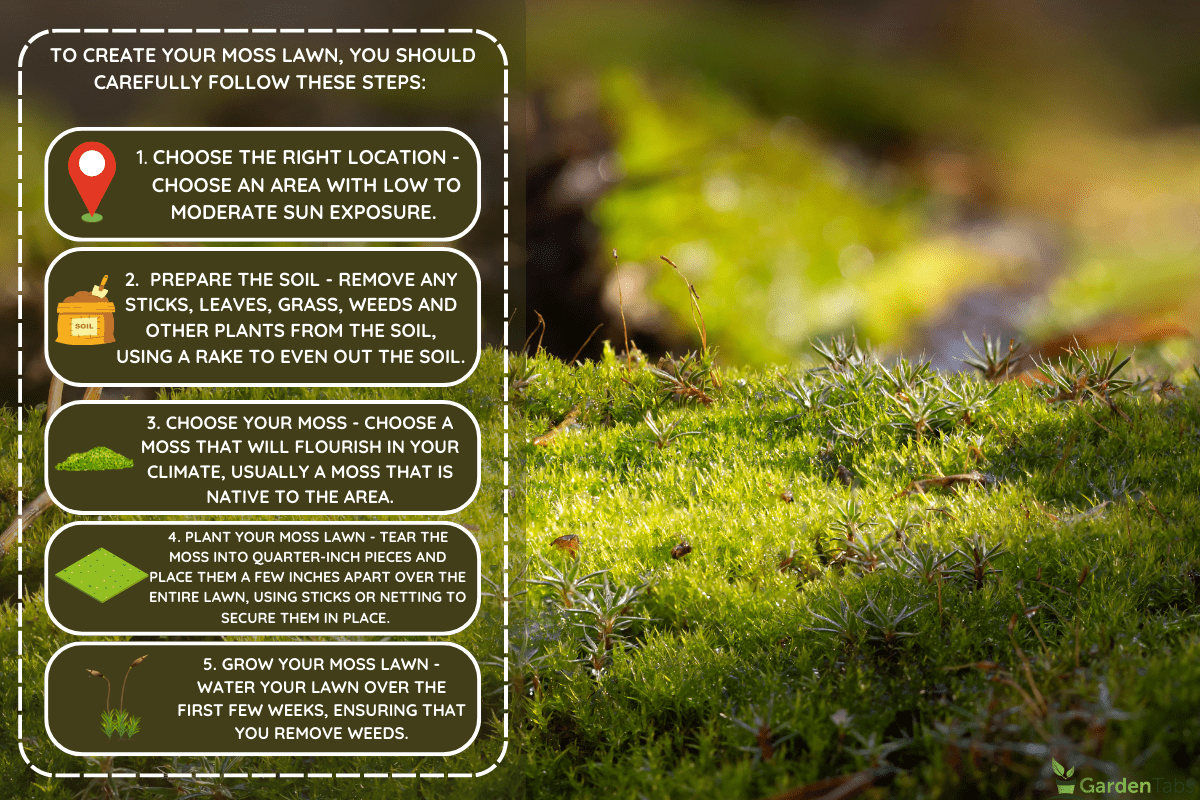
Choosing the Right Location for Your Moss Lawn
Choosing the right location is critical to the success of your moss lawn. Most species of moss typically enjoy areas that have low to moderate amounts of sunlight. This allows them to maintain the moisture they need to survive, but it also allows them to get the sunlight they need for photosynthesis.
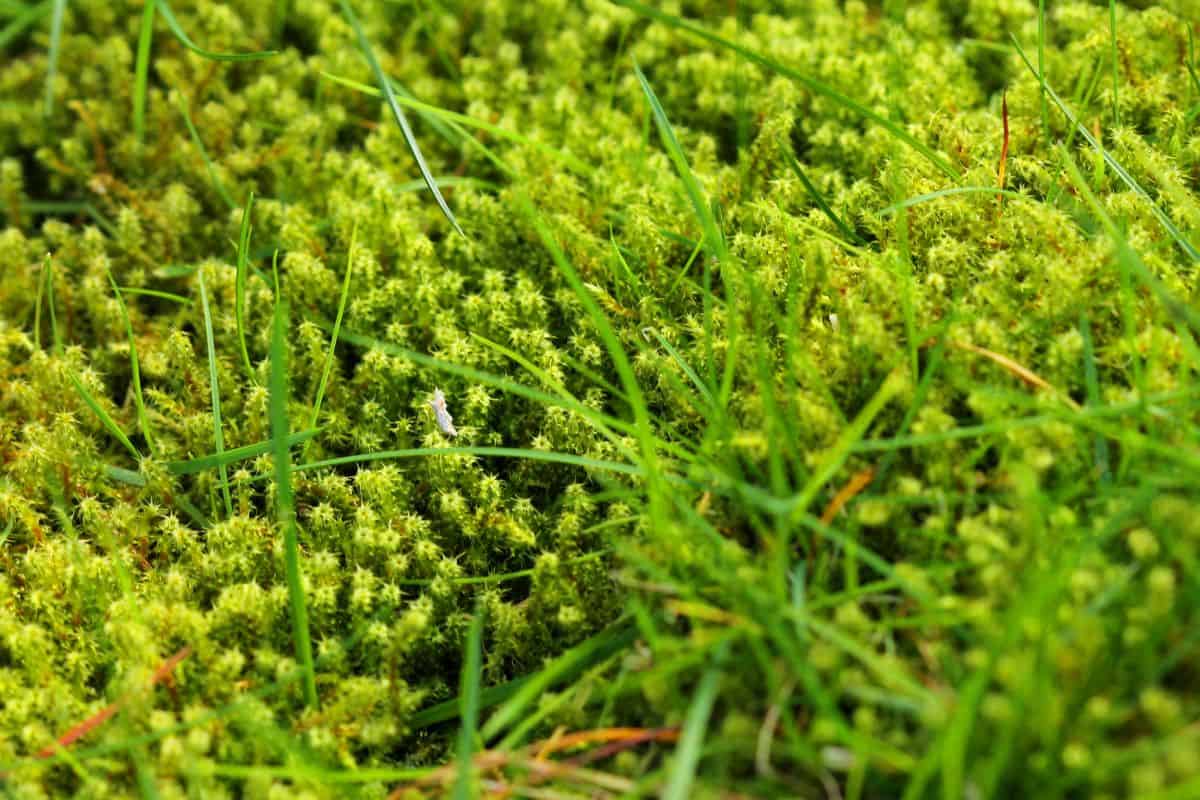
While there are some species of moss that can live in full sun, ensuring that the area gets some shade throughout the day will help most mosses flourish. If your lawn doesn’t have shade, planting trees or bushes in the area can help the mosses get the shade they need to grow.
Preparing the Soil

Once you’ve chosen the location of your moss lawn, you need to prepare the soil. Moss needs exposed ground free of plants and debris to grow, so your first step should be to clear any grass, weeds, leaves, sticks and other plants from the area.
You also need to make sure that any depressions in the soil are taken care of before you plant. Depressions in the soil allow water and debris to collect, which will drown and asphyxiate your moss.
Choosing Your Moss
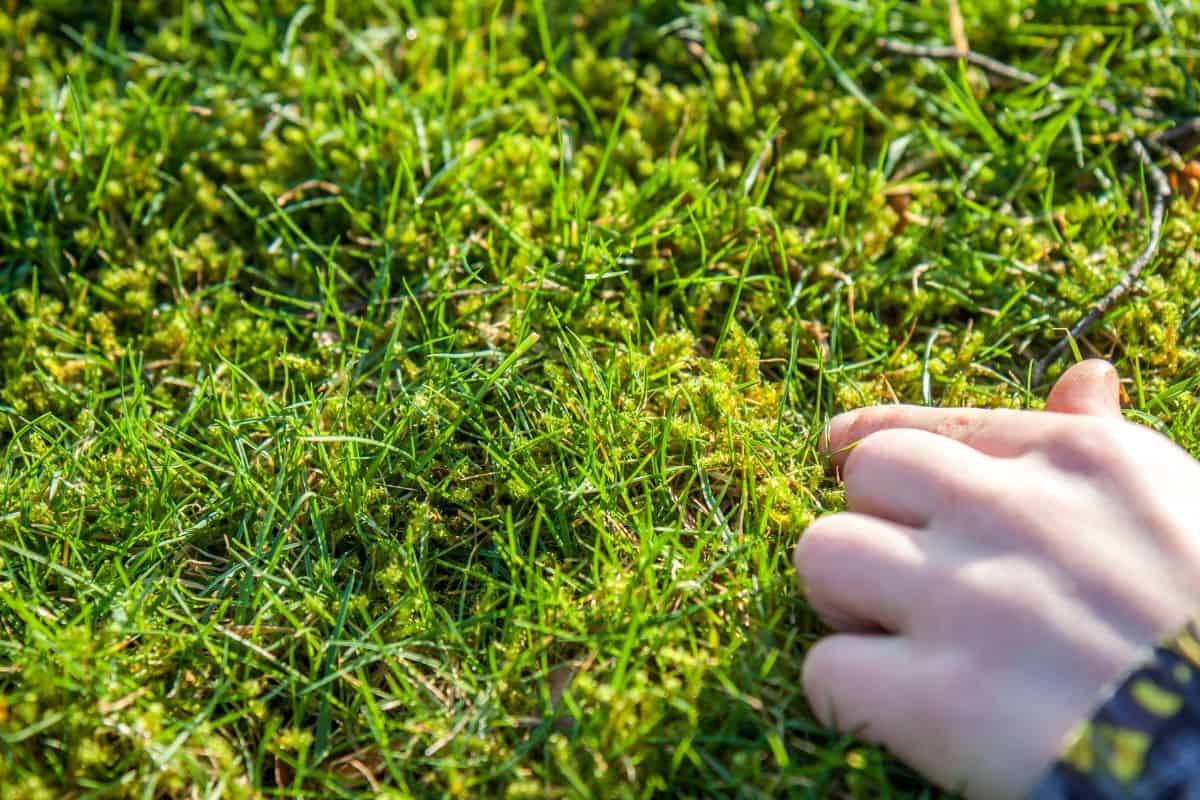
When it comes to types of moss, there are two main groups: acrocarps and pleurocarps.
Typically speaking, acrocarps will do better in drier climates and are more drought resistant. If you live in a drier climate, species like broom moss and heath moss are great choices for your lawn.
If you live in a wet climate that is cooler, pleurocarps are a better choice because they will not rot with excess moisture. They also do better in the shade but can tolerate some sunlight. Species like fern moss or hypnum moss will give great coverage and tolerate cooler, wetter climates.
The good news is that you can grow a moss lawn almost anywhere. Moss is found on all seven continents and can flourish all year round. While certain species do better in certain climates, most moss species will do well in hardiness zones 3 through 9.
There are lots of choices when it comes to species of moss, but species that are native to the area will be acclimated to the local rainfall and temperature and will flourish on your lawn.
Visiting your local nature areas and collecting moss species is a great way to ensure that your moss lawn will succeed and have a natural appearance. You can also buy species of moss from suppliers, just make sure your chosen moss can grow in your climate.
Planting Your Moss Lawn

The best time to plant moss is when the weather is generally cooler, such as spring or fall. This will protect your new moss plants from drying out in the hot weather during summer.
To plant your moss lawn, start by compacting the soil. This can be done by spraying water over the surface of the soil and compacting it using a shovel or even your feet. Once the soil is compacted, use a rake to scratch the surface of the soil; this will help the moss attach once it is planted.
Take the moss you are planting and tear it into pieces, making sure that they are no smaller than a quarter-inch in size. Place the pieces of moss on the soil in equal intervals, about one to two inches apart. After you place each piece of moss, gently press the moss into the soil to encourage the moss to attach.
You should also secure the moss to the ground using sticks or netting. This prevents wind or rain from carrying it away.
Grow Your Moss Lawn
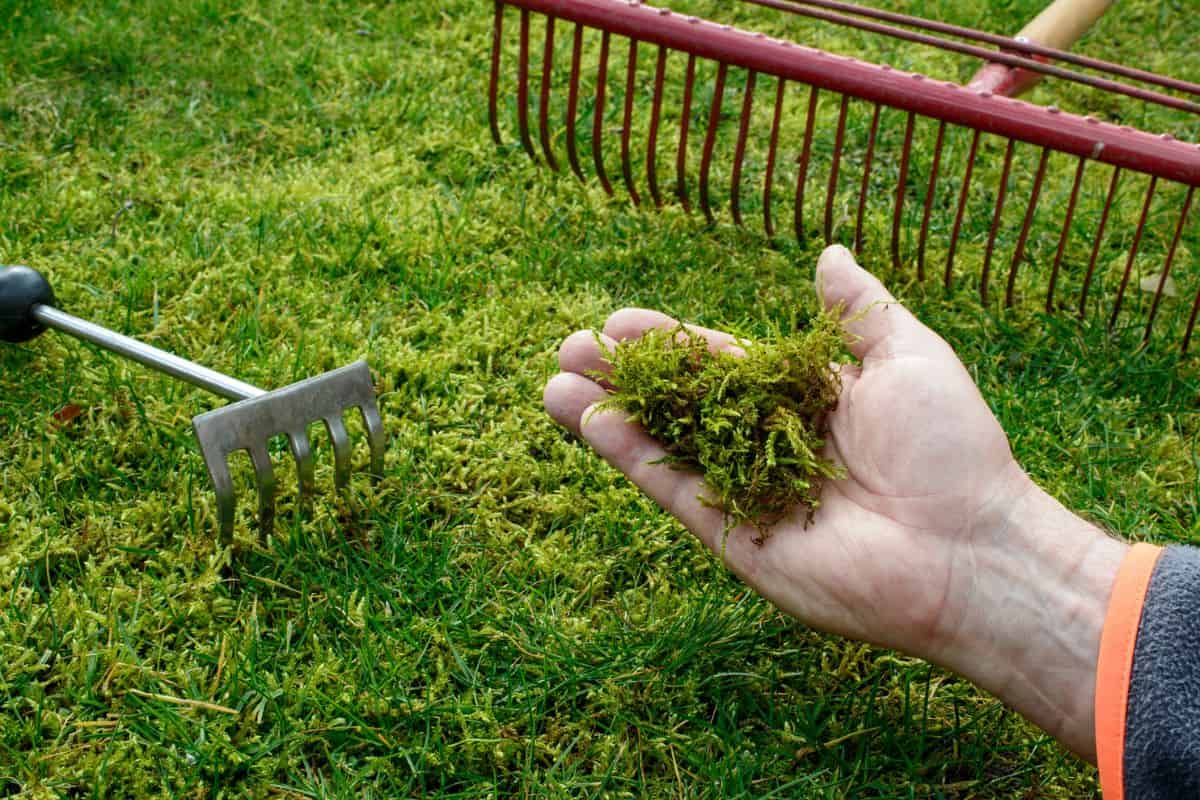
If you planted an acrocarp, you should water your moss lawn daily for the first two months. If you are experiencing heavy rains, do not water your acrocarp; too much water in the early stages can drown it. If you planted a pleurocarp, you should water it daily. Pleurocarps can handle more water than acrocarps, so your main focus should be making sure it doesn’t dry out.
As your moss lawn grows you might notice weeds popping up. You can walk out on your moss lawn to take care of these weeds because moss can handle light foot traffic. However, moss can’t handle the stress of jumping, running, or sliding, so avoid disturbing it with sudden movements.
What Are the Pros and Cons of a Moss Lawn?
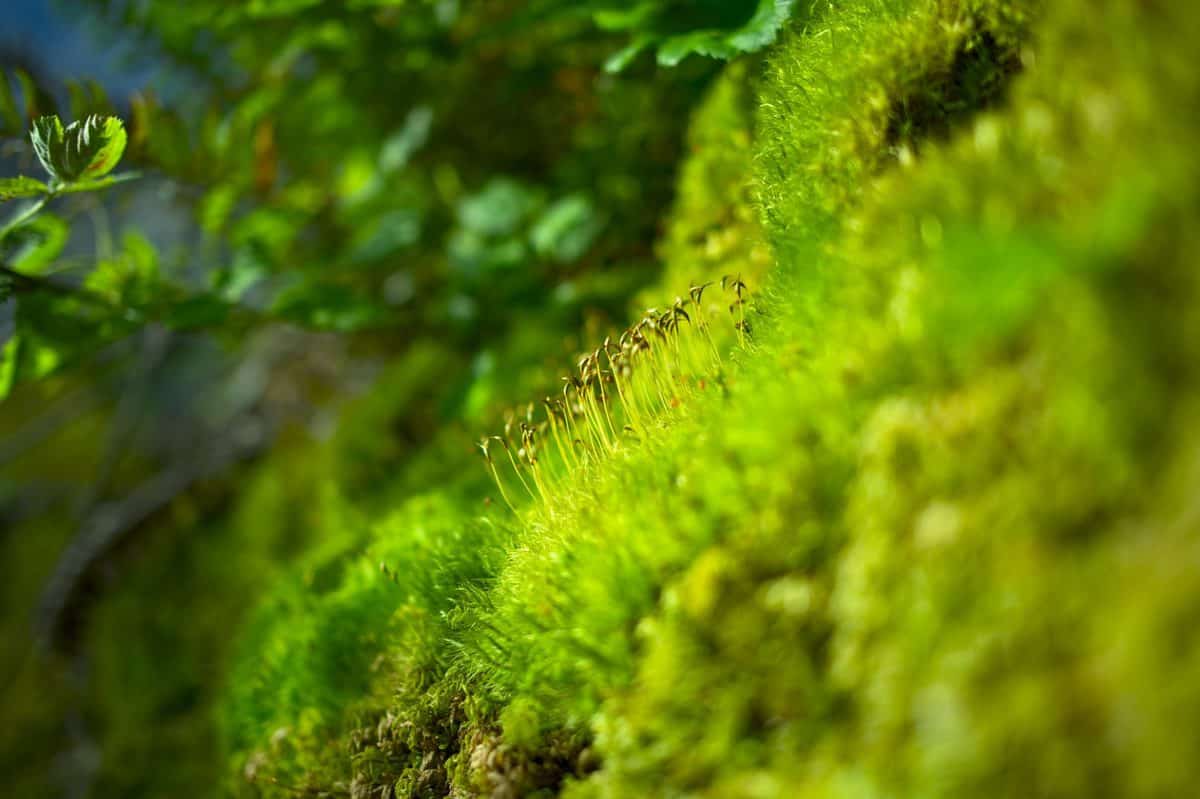
Moss lawns are a great landscaping option that will look great any time of year. Moss will usually grow in conditions that do not support traditional grass, which makes it a great choice for lawns that can’t easily grow grass. Moss lawns are also very low maintenance and don’t require mowing or reseeding to keep them looking neat and organized.
But moss lawns also need special treatment to thrive. Moss lawns won’t tolerate high foot traffic, which makes them difficult to maintain for homeowners with pets or children. And depending on the type of moss you plant, you may be required to water it constantly if you live in a drier climate or drought conditions occur.
Start Creating Your Own Unique Landscape
Now that you know how to successfully create a moss lawn, you can build your own with confidence and style. With the perfect combination of a good location, proper preparation, the right moss, correct planting, and careful maintenance, you will have a moss lawn you can enjoy all year round.


What are you recommendations for eradicating weeds in an existing moss lawn? Moss grows naturally around our home but weeds appear in the spring and summer. Other than individually pulling them, is there a weed treatment you recommend?
You can use a broadleaf-specific herbicide. For more details, check out this other post: https://gardentabs.com/weeds-that-look-like-grass/